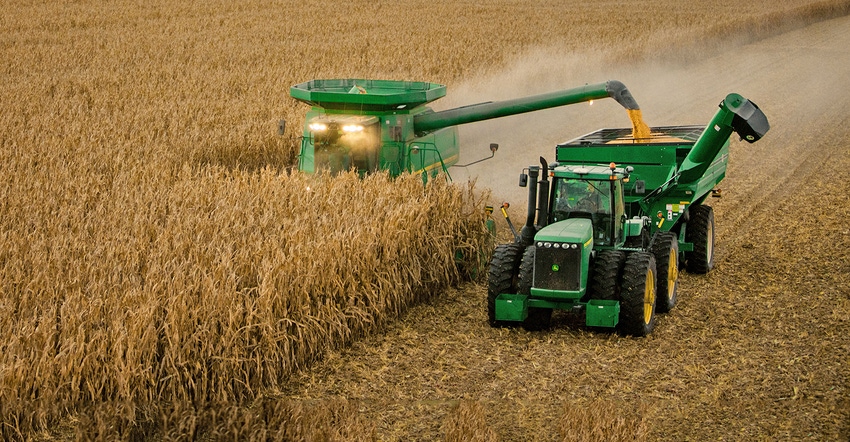October 19, 2017

Combines are wrapping up their business. Grain cart tractors are pulling their last loads. Carts are done hauling. As the grain harvest winds down, many farmers start thinking about storing machines for winter. And there are some factors you may not have considered in the past.
There's a good checklist for storing machines for winter. First step is to clean the machine removing any dust and dirt throughout the machine. Given the dusty harvest many producers faced, cleanup is a top priority.
And second, you want to top off fluids. Perhaps change the oil if you were close to a service, so you're storing that machine with clean fluid. And make sure tanks are topped off and fuel is stabilized for winter. But what about your tires?
For many farmers, the tires on which machines run are almost an afterthought — unless they go flat. But proper storage can help save you trouble when it's time to get back to work next season.
"When I talk about winterizing, before we put that piece of equipment away, do a once-over," says Brad Harris, manager, global agricultural field engineering, Firestone Ag. "Do a once-over, and see if there are any major things that would cause the tire not to perform next season."
Sounds simple, but the wear tires take these days means farmers should check now: Scheduled downtime is always better than surprise downtime. Harris suggest going over each tire and looking for extra wear.
"Look at the sidewalls of the tires and make sure there are no cuts or snags. A superficial cut is not an issue, but deep cuts, where you can see ply cord, are a good indication that there's been damage to the tire," Harris says.
He also advises looking at the tread area. He suggests looking at the lug, or skid, depth. "If it is only 20% of what it used to be, you'll probably want to consider purchasing new tires," he notes. "Below that 20%, and if you get into a wetter spring with that tractor, you'll lose traction. You want to make sure that machine is operating at peak performance."
Consider the air
Looking over tread and sidewalls for damage and excess wear is a simple task. But have you considered the air pressure at storage time? "Make sure the tire still has air in it; we don't want tires sitting flat on heavy axle loads," he notes.
Sounds simple, but if you put away a tire at field-pressures — say 15 psi — you could be asking for trouble by spring. Harris explains that a tire will naturally lose 1 to 2 psi per month as air wicks through the sidewalls, or out of the tube.
"Naturally, over time, there's loss," he says. "We recommend that when customers put equipment away, they air them up into the 20- to 30-psi range — just so as they go through the winter, they don't go flat."
Given the axle loads of some of today's equipment, keeping tires inflated during storage is a good way to preserve that tire investment.
Harris adds that the recommendations are the same for bias as well as radial tires. Check their condition, and have them aired up for storage. That should preserve your investment.
About the Author(s)
You May Also Like






